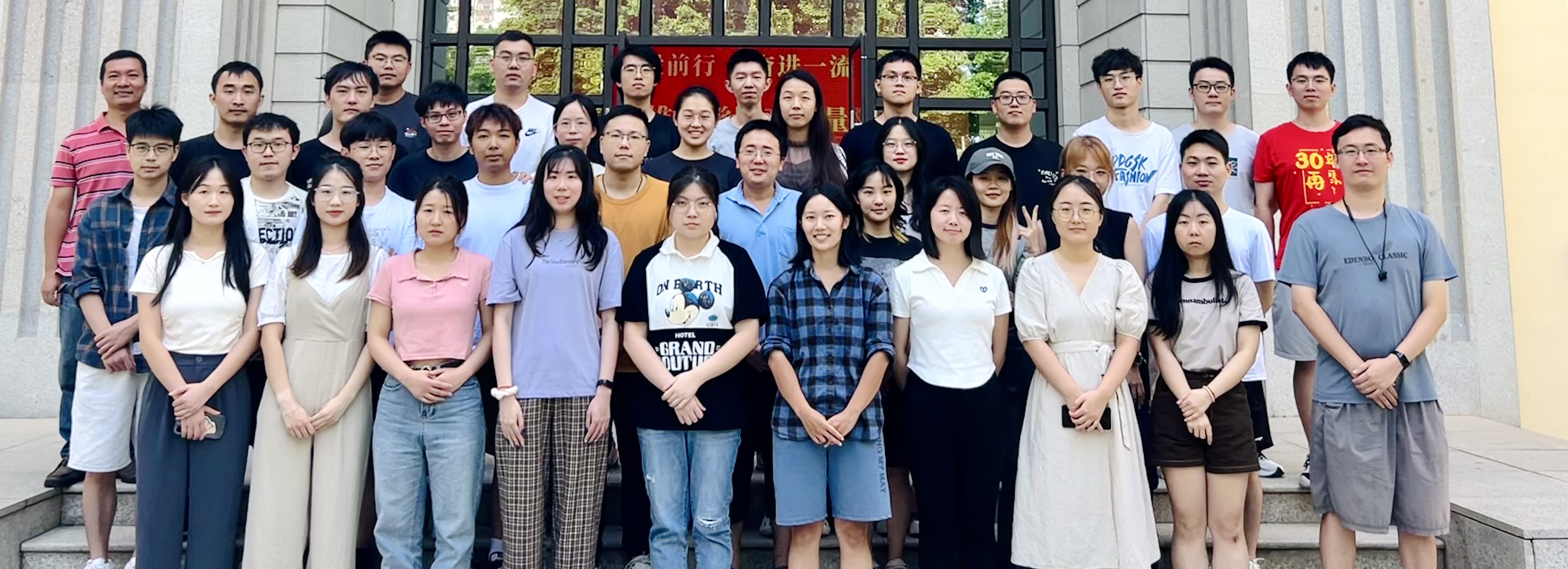基于磁共振波谱的癫痫发作大脑代谢产物的研究
Research on Brain Metabolites of Epileptic Seizures Based on Magnetic Resonance Spectroscopy
Respondent: Dongbao Liu
Supervisor: Xiaobo Qu Professor/Doctoral supervisor
Xin Wang Senior Engineer
Chairman of the Reply Committee:
Jiyang Dong, Professor Doctora/supervisor, Department of Electronic Science, Xiamen University
Member of the Defense Committee:
Lijun Bao, Associate Professor/Master supervisor, Department of Electronic Science, Xiamen University
Jianzhong Lin, Chief Physician/Master supervisor, Department of Imaging, Zhongshan Hospital, Xiamen University
Secretary of Defense:
Xin Wang, Senior Engineer, Department of Electronic Science, Xiamen University
Time:May 25, 2021 at 9:00 AM
Place:Xiamen University Haiyun Park Research-II Building 313
------------------------------------------------------------------
摘要
背景:磁共振波谱(Magnetic Resonance Spectroscopy, MRS)因其非侵入性在医学脑代谢领域大放异彩。颞叶癫痫发作(Temporal Lobe Epileptic Seizures, TLES)给患者及其家属带来沉重的伤害,与此同时还存在着一种发作病症表现非常像癫痫发作的器质性非癫痫性发作(Organic Non-epileptic Seizures, ONES)。本文利用MRS来探究TLES患者和ONES患者之间的脑代谢物的差异,并揭示不同的场强的磁共振仪对区分癫痫患者与健康个体的敏感性的影响。
方法:利用病例对照的研究思路,在临床1.5T磁共振系统上对皆处在发作后期的23例TLES患者和9例ONES患者进行了MRS数据采集,同时利用15名健康志愿者的1.5T数据作为对照。以年龄作为协变量使用Mann-Whitney U检验,对大脑代谢物的比值进行了统计分析,此外在临床3T磁共振系统上对处在发作后期的29例TLES患者进行了MRS数据采集,同时利用6名健康志愿者的3T数据作为对照,并和23例TLES患者和5名健康志愿者的1.5T的MRS数据进行交叉对比。
结果:TLES组与ONES组相比较时,TLES组左颞极的N-乙酰天门冬氨酸/肌酸(N-acetyl-aspartate/Creatine, NAA/Cr)比值明显低于ONES组(TLES组为1.422±0.037,ONES组为1.640±0.061,P = 0.012);TLES组右颞极的NAA/Cr比值明显低于ONES组(TLES组为1.470±0.052,ONES组为1.687±0.084,P = 0.023)。场强为1.5T和3T的磁共振仪并不会因为场强差异而导致MRS数据产生差异(P<0.05)。此外TLES组与健康对照组在脑代谢物上的差异体现在NAA/Cr、N-乙酰天门冬氨酸/胆碱(N-acetyl-aspartate/Choline, NAA/Cho)和N-乙酰天门冬氨酸/(胆碱+肌酸)(N-acetyl-aspartate /(Choline + Creatine), NAA/(Cho + Cr))。
结论:本文发现处在发作后期的TLES组与ONES组在脑代谢物上的显著性差异体现在NAA/Cr,NAA/Cr有可能作为一个区分诊断TLES和ONES的推荐参考值,这一点在我们已知的参考文献中未找到这一点。此外通过对不同场强的对比表明1.5T系统与3T系统在利用MRS检测脑代谢物含量以诊断癫痫患者时,这二者无明显差异,因此可推荐1.5T系统作为诊断首选以节省医疗成本。
关键词:代谢物;磁共振波谱;颞叶癫痫发作;器质性非癫痫性发作;统计分析
ABSTRACT
Objective: Magnetic resonance spectroscopy (MRS) has shined in the field of medical brain metabolism due to its non-invasiveness. MRS was used to differentiate between temporal lobe epileptic seizures (TLES) and organic non-epileptic seizures (ONES), whose external manifestations are similar to TLES, and reveal whether different field strengths affect the sensitivity of distinguishing epilepsy patients from healthy controls.
Methods: By case-control research idea, 23 patients with TLES and 9 patients with ONES in the postictal phase underwent MRS examinations on a clinical GE 1.5T system, with 15 healthy controls in comparison. Statistical analyses on the ratios of brain metabolites were performed using the Mann-Whitney U test with age as a covariate. In addition, the MRS data of 29 TLES patients in the postictal phase and 6 healthy controls from a clinical GE 3T system was cross-compared with the 1.5T MRS data of 23 TLES patients and 5 healthy controls.
Results: The results showed that N-acetyl-aspartate/Creatine(NAA/Cr) ratio of patients with TLES was statistically different from that of patients with ONES in the postictal phase, i.e. TLES 1.422±0.037, ONES 1.640±0.061, P = 0.012 in left temporal pole, while TLES 1.470±0.052, ONES 1.687±0.084, P = 0.023 in the right temporal pole. Magnetic resonance equipment does not cause differences in MRS data due to the difference in field strength of 1.5T or 3T (P < 0.05). Besides, compared with healthy controls, patients with TLES in the postictal phase present significant differences in ratios of NAA/Cr, N-acetyl-aspartate /Choline (NAA/Cho), and NAA/(Cho+Cr).
Conclusion: The results show that the significant difference in brain metabolites between the TLES group and the ONES group in the postictal phase is reflected in NAA/Cr. NAA/Cr can be used as a recommended reference value for distinguishing TLES from ONES, which has not been found in the references to the best of our knowledge. When MRS detects the content of brain metabolites to diagnose patients with epilepsy, there is no significant difference between the 1.5T system and the 3T system. The 1.5T system can be recommended as the first choice for diagnosis to save medical costs.
Key words: Metabolites; Magnetic resonance spectroscopy; Temporal lobe epileptic seizures; Organic non-epileptic seizures; Statistical analysis
欢迎广大师生莅临指导!

